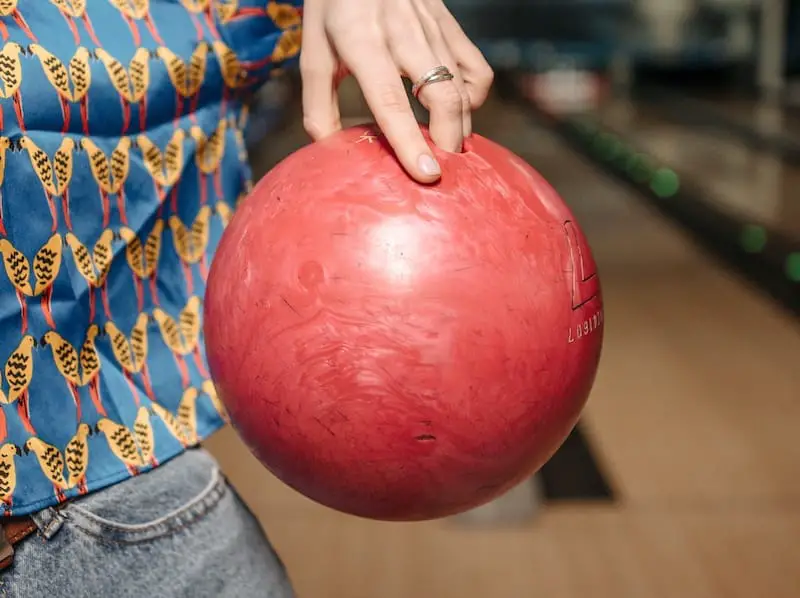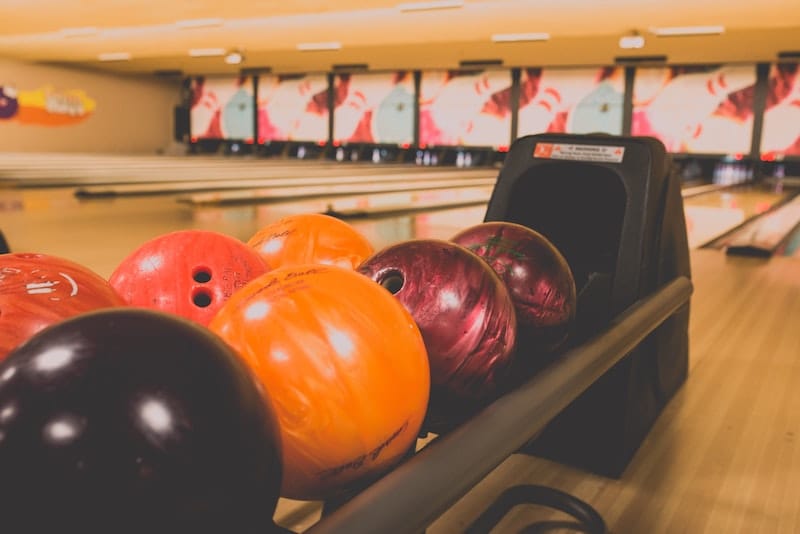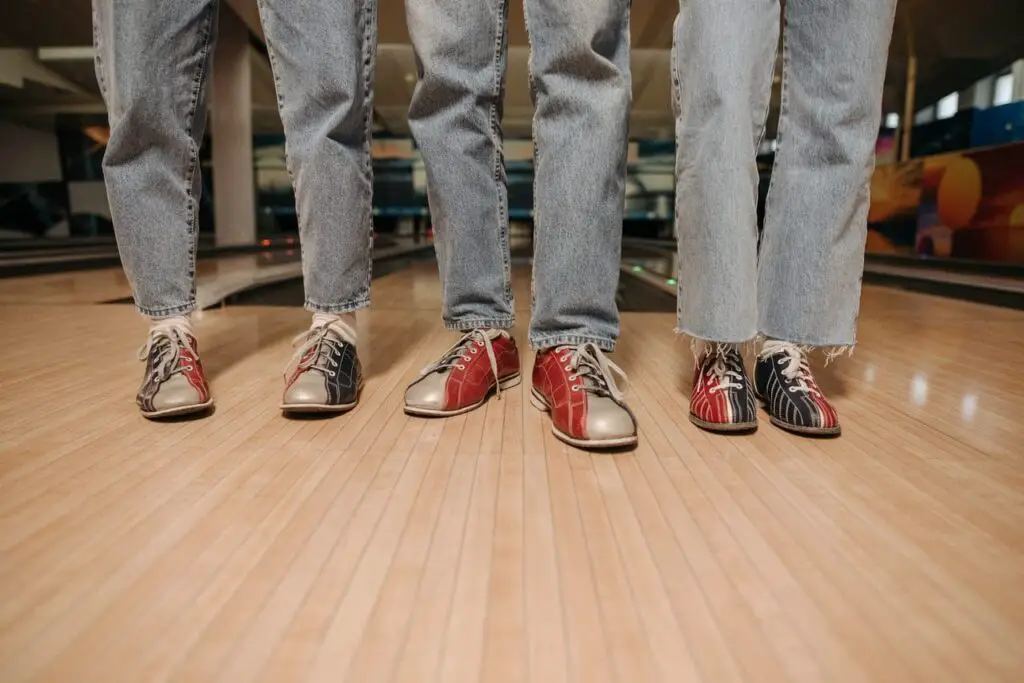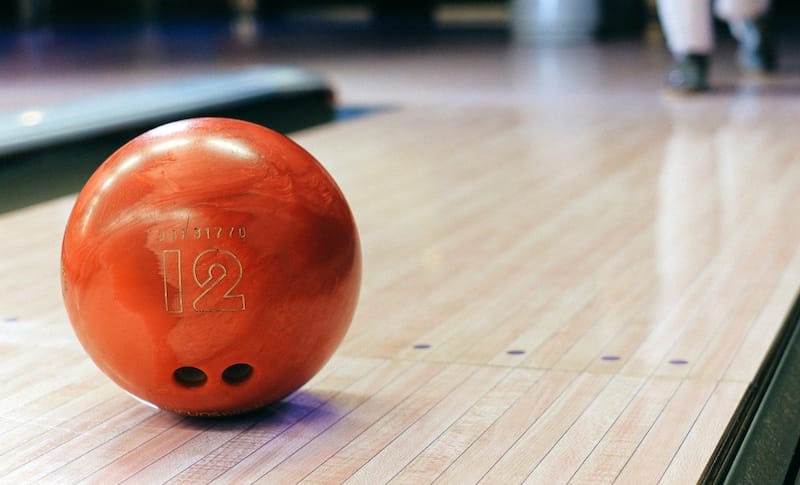Do you always have thumb pain after bowling? Solutions vary from simple home remedies to preventative practices to seeking help from a medical professional. You may have previously heard the mantra (RICE) when it comes to dealing with sports injuries. That certainly applies here, but so do a host of preventative measures, such as learning how to grip the bowling ball.
This can be a frustrating problem to deal with, especially when it keeps you away from the game you love. In the sections below, you’ll find a list of 15 actions you can take to reduce thumb swelling from bowling.

What Is Bowler’s Thumb?
Bowler’s thumb is a common condition affecting bowlers, jewelers, and baseball players, among others. Fibrous tissue is deposited around the two nerves in the thumb. The number one cause is repetitive pressure around the nerve. This is most commonly seen in bowlers who bowl more than once per week.
Here are signs that you may have bowler’s thumb:
- Tingling and increased sensation at the top of the thumb.
- A small, tender nodule on the thumb
What Else Causes Thumb Soreness?
Bowler’s thumb is not the only potential cause of thumb soreness after bowling. You could also be experiencing the symptoms of a trigger finger, an acute thumb injury known as a sprain, or the effects of an underlying condition. Included below are tips on how to deal with soreness related to all of these.
Take Some Much-Needed Time Off
This may not be the advice you want to hear, but sometimes a sore thumb is your body telling you that it’s time to take a little rest from bowling. This is certainly hard to do when you’re at the top of your game, but the recovery time will do you many favors in the long run.
Even one day of rest can make a big difference. This should give enough time to reduce swelling. During your day of rest, you are certainly encouraged to engage in other activities that reduce inflammation. This includes the application of ice and the consumption of anti-inflammatory medications like ibuprofen.
Take Anti-Inflammatory/Pain Relief Medication
Reducing the pain caused by irritation and swelling is the primary goal. Anti-inflammatory medications can certainly help. Scheduled doses of over-the-counter drugs can significantly reduce swelling, as long as they are taken safely and correctly.
- Medications include ibuprofen (Advil, Motrin), naproxen (Aleve), or acetaminophen (Tylenol).
- Acetaminophen can relieve mild pain but is not effective at reducing swelling.
- These should always be taken with food.
- Limit your long-term usage to periods of 5-7 days, as overuse can lead to kidney damage, ulcers, and other serious side effects.
Anti-inflammatory medications are more so a temporary than a permanent solution. They should be used in conjunction with other activities, such as Resting, Icing, Compression, and Elevation (RICE).
Bowling with long nails? Do this to protect your long nails when bowling.
Do A Cold Treatment
You can reduce the swelling in your thumb by applying ice to the affected area. This eases pain by numbing the target area and reducing inflammation. Two methods are recommended for cold packs:
- Ice towel method: Dampen a towel with cold water and then fit it into a sealable plastic bag. Place the bag into the freezer for 15 minutes before applying it to the affected area.
- Ice pack/cold compress: Place ice into a sealable plastic bag. Pour a small amount of water into the bag. Squeeze the air out of the bag before sealing it and wrapping it in a damp towel.
How Long Should You Ice A Sore Thumb?
The Mayo Clinic recommends an icing regimen of 15-20 minutes every 4-6 hours after an injury. You should always place a cloth or towel between your skin and the cold pack.
Or Do A Heat Treatment
In some cases, a heat treatment may be necessary. Heat is typically used either before bowling or for relieving stiffness in muscles and joints. There are several reasons why heat treatment can be beneficial:
- Heat increases blood flow to the affected area.
- It also speeds up molecules in tissues, making for an effective morning warm-up.
Even just a warm shower or bath can help sore, stiff joints. Warm compresses and heating pads are a great way to deliver heat to an affected area. This Sunbeam Heating Pad comes with three different heat settings and includes a sponge insert that mimics the effect and sensation of a warm bath or shower in the affected area.
Wear A Thumb Splint
One of the quickest ways to heal a bowler’s thumb is rest, ice, and compression. A thumb splint, like the one found here, will help take care of the compression part of the classic RICE mantra:
- The thumb splint will immobilize the thumb.
- This gives you a chance to partake in daily activities without overextending the thumb.
- You are encouraged to wear the splint to bed at night. Injuries are often aggravated by nightly tossing and turning.
You might consider the merits of a thumb splint specially designed for bowling play, such as a Bowling Thumb Protector. This splint is made from a material that is designed to reduce friction, thereby making it easier to grip the ball the right way.
Wear Thumb Tape For Better Grip
Thumb tape can improve your grip and should help as a preventive measure for dealing with thumb soreness, which could be traced back to improper grip while bowling. The good news is that thumb tape is relatively affordable as well.
Take, for example, this Storm Max Pro Thumb Tape, which comes in packs of 40. The thumb tape is split into three different categories: fast, medium, and slow. These tapes are engineered to match your preferred release speed. They act to prevent grip issues and subsequent soreness caused by sweating.
The United States Bowling Congress considers tape to be one of the most underused tools in the game today. It helps the bowler’s hands withstand the wear and tear associated with the game.
Do Gentle Exercises For Trigger Finger
A trigger finger is a common injury resulting from worn tendons. Motion can be excruciating if trigger finger is encountered. Bowling is one possible cause of trigger finger. You may even get a trigger finger from texting.
One sign of this condition is a bump at the base of the finger. Your thumb may be difficult to straighten, even to the extent that it stays in the bent position.
Gentle exercises can be used to treat trigger finger in the thumb:
- Fingertip bend– Hold the finger just below the top joint and bend the top of the finger while keeping the rest of the finger still.
- Tendon strengthening exercise– Bend the thumb inward until it touches the top of the index finger. Hold this for 10 seconds.
- Ball squeeze: Hold a small ball in the palm and gently apply pressure with the fingertips. Repeat 3-4 times per day.
Learn How To Grip A Bowling Ball Properly
Improper technique typically leads to bowling injuries. Quality foot positioning and follow-through are certainly paramount for success, but so is finger grip. Bad habits put unnecessary strain on the thumb and wrist. Improper technique will eventually catch up to you if you play regularly.
Here are some tips for gripping a bowling ball from the National Bowling Academy:
- Finger holes: If the finger holes are causing your grip to be too loose or too tight, this could contribute to soreness.
- Pressure: You shouldn’t have to squeeze to be able to grip the ball.
- Thumb grip: In no case should you be bending your thumb to grip a bowling ball.
Buy Finger Inserts For Bowling Balls
If you are experiencing consistent swelling and discomfort, you might consider purchasing finger inserts for your bowling ball. These are placed in the thumb and finger holes. Inserts can keep skin from becoming irritated and can make it much easier for you to apply the ideal amount of pressure when gripping a bowling ball.
There are two types of inserts: oval and rounded. The choice depends on personal preference. Go with whatever insert best suits you. The good news is that these are not expensive and come in packs of both oval and rounded inserts, such as the set of inserts below.
Pick The Right Bowling Ball To Reduce Injury
Perhaps it’s not the technique that’s the problem. Playing with an improperly-sized bowling ball can lead to thumb soreness. Given a 9-16 pound range of weight, many players may struggle to find the perfect fit.
Here are a few general rules-of-thumb (pun intended) regarding bowling ball size:
- Choose the heaviest ball that you can handle with ease.
- The thumb shouldn’t feel too loose or too tight in the thumb hole.
- When you find a weight you like, stick with it. Regulars buy their bowling balls for a reason.
Arthritis May Be Causing Your Thumb Pain
There may be some underlying condition that is causing your thumb pain, such as arthritis. The Mayo Clinic reports that thumb arthritis is a common injury, affecting nearly half of women over the age of 70. It’s commonly seen in other demographics as well, particularly seniors.
A sign that you have thumb arthritis is a pain in the thumb joint. This is caused by a wearing down of the cartilage at the base of the thumb.
The treatment plan for thumb arthritis involves wearing a splint, taking anti-inflammatory medications, and possibly seeking out physical therapy. Doctors may also recommend steroid injections to further reduce inflammation.
Ease Pain Through Acupressure
Acupressure is a simple home remedy for those experiencing pain at the base of their thumb. The use of pressure points for treating thumb soreness is considered to be non-invasive and relatively risk-free.
- Use the thumb and index finger from the opposite hand.
- Firmly apply pressure to the webbing between your thumb and pointer finger.
- Hold for 30 seconds.
- If it makes the pain worse, then discontinue this exercise.
You may repeat this exercise 3-4 times throughout the day and after a bowling session.
Wear Elastic Bandages For A Thumb Sprain
A thumb sprain is an injury in which stretching or damage occurs at the ligament, which connects bone to bone. Sprains are usually caused by falls, although an awkward movement with a bowling ball could trigger this acute injury. If you have high pain tolerance, you may chalk it up to simple soreness.
Symptoms of a thumb sprain include:
- Pain
- Swelling
- Bruising along the inside of the thumb, by your first knuckle
A thumb sprain will require you to take 4 or more weeks off. RICE (Rest, Ice, Compression, Elevation) is the primary treatment for a sprain. An elastic ACE bandage will be the most effective at reducing swelling in this case. Your hand should be elevated above your heart as much as possible.
Seek Out Physical Therapy
If soreness persists and none of the above steps seem to be working, then you may consider the benefits of physical therapy. Medical professionals can show you how to reduce swelling and prevent future issues.
- Schedule an appointment with an orthopedist who may recommend physical therapy.
- Visit a physical therapist, where you’ll learn more about beneficial exercises.
- Continue with preventive exercises and practices, as may be recommended.
Seek Surgery If You’re Out of Options
Persistent injury may require surgical intervention. This may be the only solution if you’ve already tried everything and it doesn’t seem to be working. This would be a good time to visit a medical professional if you haven’t done so already.
An orthopedic surgeon will advise you on whether or not surgery is necessary. Even after surgery, you could be sidelined for quite some time. Remember, all severe injuries typically begin as simple swelling. Be sure to take the preventive measures mentioned above so that you may continue to enjoy bowling.
Final Thoughts
The first steps toward reducing thumb swelling involve RICE (rest, ice, compression, and elevation. You can take anti-inflammatory medications as long as ingestion is limited to scheduled doses for 5-7 days. The long-term solution is to engage in preventative measures.
Preventative measures include learning how to grip the bowling ball the right way, picking out the right equipment, and performing exercises among a wide variety of other solutions.


